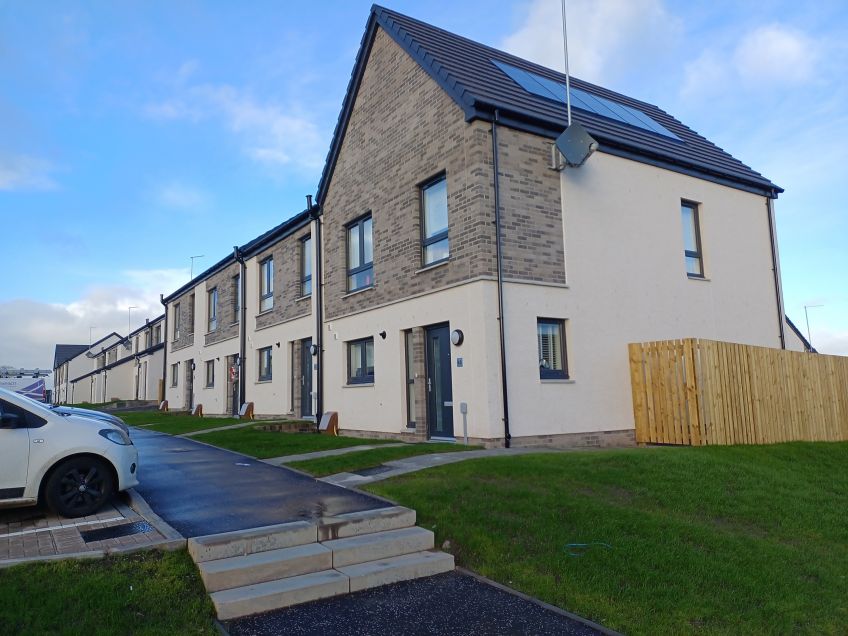Social housing pilot aims to change the future of house-building in Scotland
New study to focus on reducing energy costs for tenants

An innovative research project being carried out by one of Scotland’s biggest housing groups could transform the way social housing is built in the future and reduce energy bills.
Wheatley Group, in partnership with MAST Architects and CCG, are carrying out a Scottish-first trial at the housing group’s new Shandwick Street development in Easterhouse, Glasgow.
It has seen six new-build homes designed, constructed, and insulated using different technology methods.
The energy consumption and efficiency of the six homes will be monitored for one year to see if they meet or exceed current Passivhaus standards. The results and learning will help shape the new housing regulatory standards in Scotland.
Lindsay Lauder, Director of Development and Regeneration at Wheatley Group, said: “As the largest provider of social housing in Scotland, we have an important role to play exploring new thinking and technology to address the issue of rising fuel bills.
“Each of the six properties in the research have received unique enhancements, including upgraded fabrics for insulation, enhanced levels of airtightness, and a reduction in the levels of non-repeat thermal bridging.
“The results will be shared with Scottish Government and the wider sector to help shape future new build housing, not only for Wheatley and it’s tenants but for all tenants of new build affordable homes in Scotland.”
The Scottish Government has announced plans to introduce a new Scottish equivalent to the Passivhaus standard – an international energy performance standard for buildings which aims to reduce the requirement for space heating and cooling.
Wheatley Group, which owns and manages over 64,000 homes for social rent including Scotland’s largest social landlord in Wheatley Homes Glasgow, was named in 2024 as the UK’s biggest builder of social housing over the past decade.
Wheatley and MAST Architects commissioned Dr Richard Atkins, a leading environmental and sustainability architect, to write a report detailing the technical standards that will be applied to the six homes.
Dr Atkins said: “The intention is that a rigorous quality assurance process is carried out during construction of the blocks, like those undertaken on Passivhaus projects, to ensure the houses are constructed as designed.
“This will ensure the performance gap, which often exists between buildings as designed and constructed, is minimised and to also understand any additional requirements this poses on the project team.”
The six new homes form part of a larger new-build development in Easterhouse, which has seen 47 new two-storey houses and cottage flats built for Wheatley Homes Glasgow, part of Wheatley Group, for social rent.
Construction of the pilot houses was completed in March 2025.
CCG Managing Director, David Wylie, said: “In light of recent regulatory and statutory changes, coupled with material and cost inflation, making affordable housing affordable has never been more challenging.
“With a focus on a just net zero transition and the potential introduction of the Scottish Passivhaus Equivalent, this research is incredibly important to understanding how enhanced building standards can be practically delivered at scale, while continuing to address localised housing needs. We share Wheatley’s enthusiasm and foresight and look forward to working with them and MAST Architects in the months ahead.”
Wheatley Group is one of the key partners in a working group set up by Scottish Government in June 2023 to help define how an equivalent to the Passivhaus standard will look in Scotland.
Architects FBN Passivhaus carried out the Passivhaus calculations for the pre-consultation report.
Further reports will be published at later stages.
Tuesday, May 06, 2025